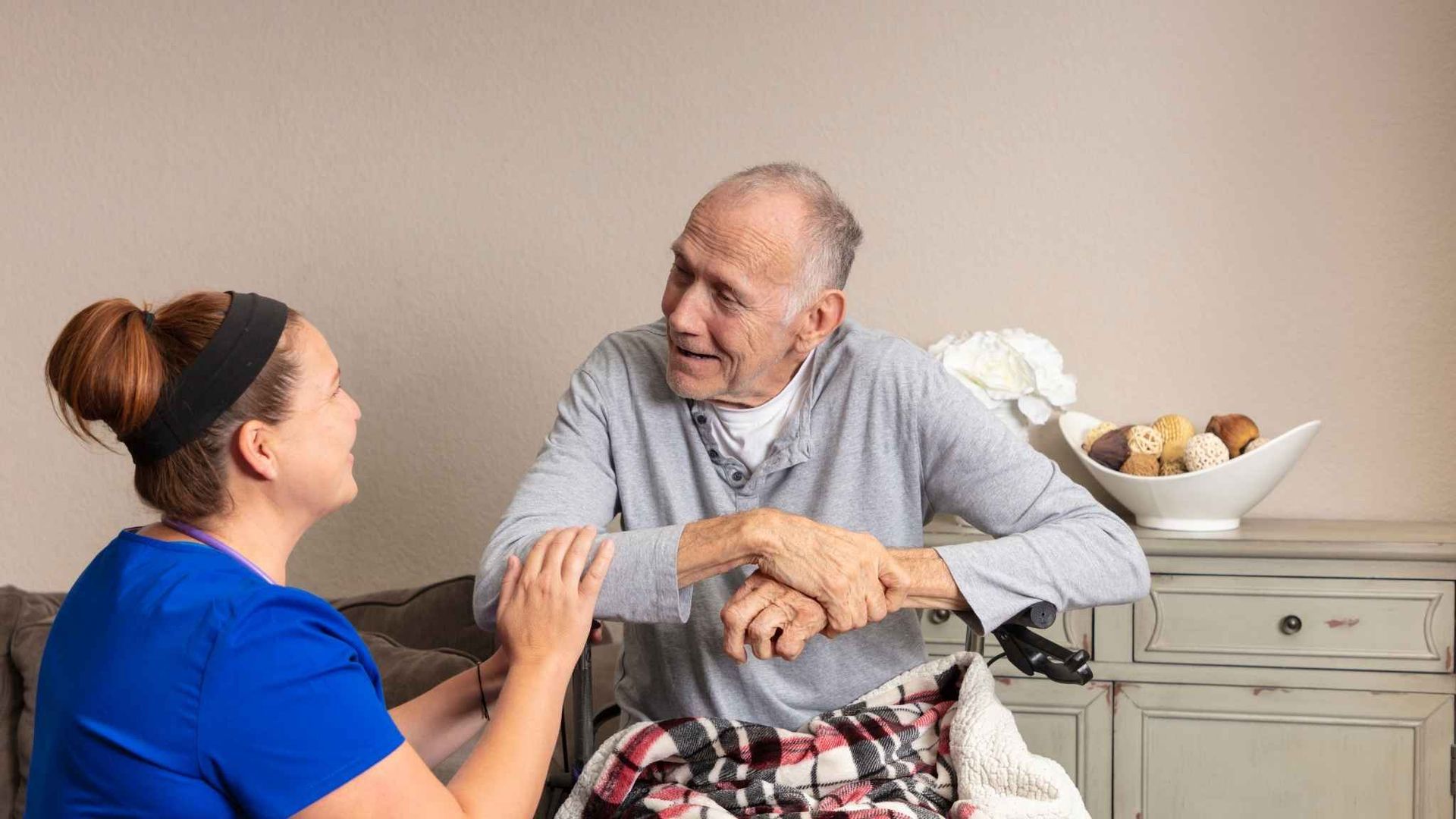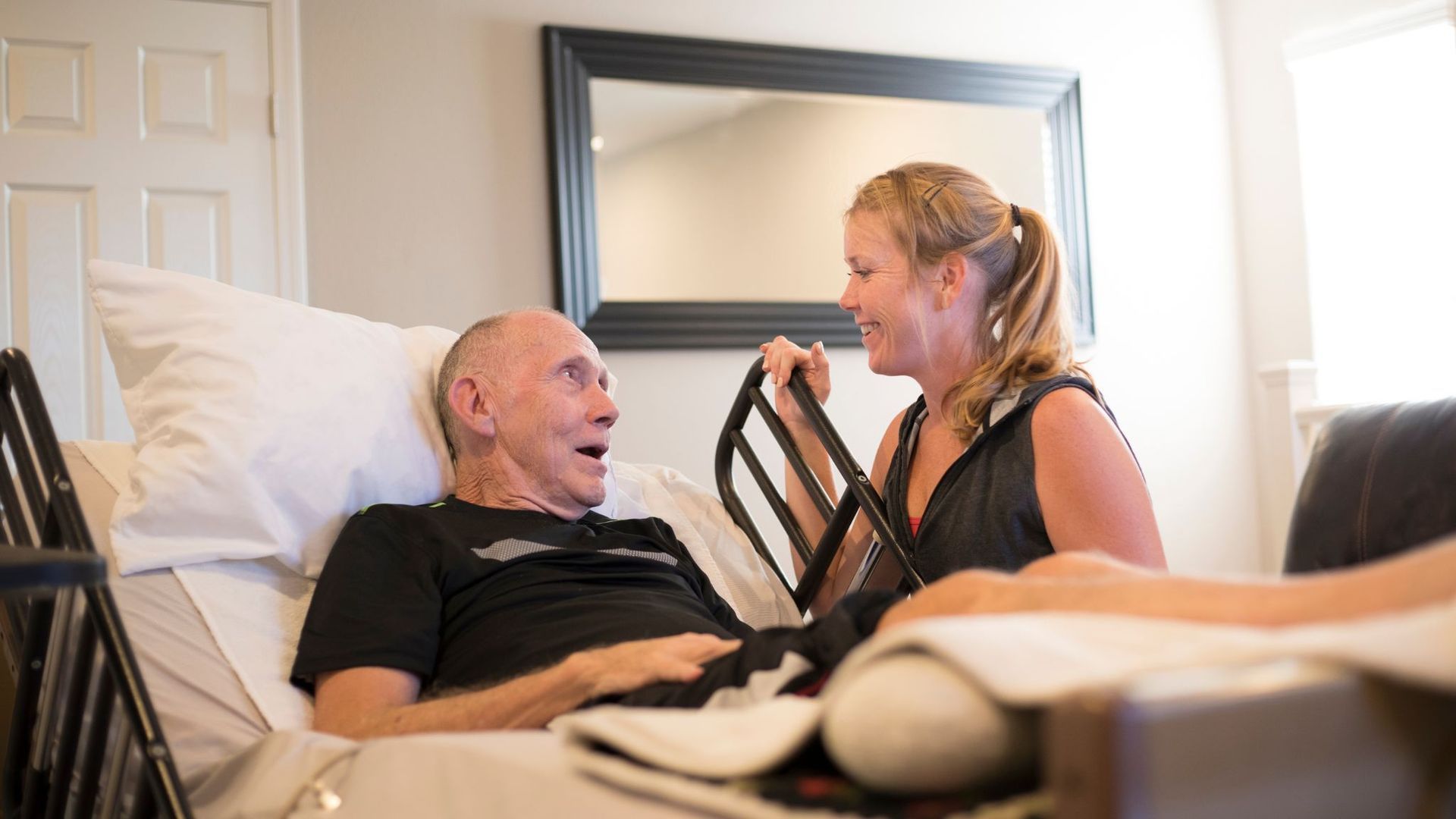What Does "Transitioning" Mean in Hospice Care?
Families often hear the term "transitioning" during the final stage of hospice care. During this time, the body essentially begins showing signs that death is approaching, usually within hours to a few days.
This process is peaceful in most cases, as hospice teams work to keep patients comfortable and pain-free. But truly knowing what transitioning means can bring clarity during this confusing time. That being said, we'll explain the process that comes with this and offer practical ways to support your loved ones (and yourself) in this difficult time.
Defining "Transitioning" in Hospice Care
Transitioning marks the body's shift from active living to active dying, hence the usage of the term transition.
During this stage, the body begins preparing itself for death in natural ways as organs slow down and stop performing their usual functions. Energy reserves become depleted as the body conserves what remains, directing resources only to core systems like the heart and brain.
This stage is not considered a medical emergency anymore, but a normal part of the dying process. Hospice teams expect this phase as part of end-of-life care, understanding that the body follows its own timeline without rushing or delaying.
How Long Does the Transitioning Stage Last?
Most patients transition over hours to a few days, though some people move through this stage more quickly than others. Each person's body responds differently based on their overall health, and the underlying illness also affects how long the process takes.
These variations make it difficult to predict an exact timeline for any individual patient.
Hospice teams avoid predicting exact timing for this stage because the body does not follow a strict schedule during this time. Care teams monitor patients closely throughout this period and adjust care plans as symptoms change or new needs arise.
Families, on the other hand, should focus on being present rather than watching the clock, as comfort and connection matter more than knowing the precise timeline.
The goal here stays consistent: keeping the patient comfortable and supported throughout their final days.
What Are the Common Signs That Someone Is Transitioning?
Several changes signal that transitioning has begun, and these signs appear gradually and may overlap. Recognizing them helps families understand what their loved one is experiencing and prepares them for what comes next.
Physical Signs
The body temperature often fluctuates during this stage, with hands and feet feeling cold or appearing mottled. Skin color changes as circulation slows throughout the body, and lips and nail beds might turn bluish or pale. These changes happen because the body redirects blood flow away from extremities to support core organs.
Appetite and thirst decrease significantly during transitioning, and most patients stop eating and drinking entirely. The body no longer needs nutrition or hydration at this point, so forcing food or fluids can cause discomfort.
Breathing Changes
Breathing patterns shift as the body's systems slow down, becoming slower, shallower, or irregular. Pauses between breaths (called apnea) can last several seconds, and Cheyne-Stokes breathing creates a cycle of deep and shallow breaths. These changes are normal and usually painless for the patient, though they can be distressing for families to witness.
The hospice team monitors breathing and provides comfort measures to help ease any difficulty. Repositioning or oxygen may help if breathing seems labored, and nurses can guide you on when to request these interventions.
Cognitive and Emotional Changes
Many patients withdraw from their surroundings during this stage, sleeping more and responding less to voices or touch. Brief periods of alertness may occur before decline continues, and some patients seem to wait for specific family members to arrive before letting go. This phenomenon happens often enough that hospice workers recognize it as part of the transitioning process.
Confusion or restlessness can happen as the brain receives less oxygen, causing patients to speak to people who are not present. They might try to get out of bed or pull at blankets, which is why close monitoring and gentle redirection become important.
Spiritual and Sensory Shifts
Some patients report seeing or speaking with deceased loved ones, focusing their gaze on something beyond the room. These experiences often bring comfort and peaceful expressions to patients, and many families find these moments meaningful and reassuring. Patients might speak about journeys, going home, or preparing to leave, reflecting the spiritual transition happening alongside physical changes.
Hospice chaplains can help families understand and honor these experiences, providing context that helps loved ones feel less frightened by what they're witnessing.
How Can Families Support a Loved One Who Is Transitioning?
Your presence provides the most important comfort during this stage, as sitting quietly beside your loved one offers reassurance. These simple gestures make a meaningful difference in their experience and help them feel less alone during this transition:
- Gentle touch remains comforting throughout the transitioning stage, so hold their hand or stroke their arm softly. Apply moisturizer to dry lips or skin, and adjust pillows and blankets to keep them comfortable. These small acts of care show love when words may not be enough.
- Create a peaceful environment in the room by playing soft music they enjoyed during their life. Keep lighting low and voices calm, and limit the number of visitors to avoid overwhelming the patient. A serene atmosphere helps the patient rest more peacefully and reduces any agitation they might experience.
- Continue speaking to your loved one even without visible responses, telling them you love them and sharing favorite memories. Read from meaningful books or religious texts, knowing that hearing often remains intact when other senses fade.
Hospice teams provide medications and guidance for symptom management, so ask questions when you feel unsure about what to do. Nurses can show you comfort techniques and positioning strategies, and you should use their expertise and support freely throughout this process.
What Should You Say or Do When Your Loved One Seems Unresponsive?
Hearing is typically the last sense to fade, which means your loved one may hear you even without responding. Speak as if they can understand every word you say, maintaining the same respectful and loving tone you always used with them.
Express your love and gratitude for the time you shared, and share memories that bring you joy and comfort. Give permission to let go if you sense they are holding on, as some patients wait for this explicit reassurance before they can pass peacefully. Some people struggle to find the right words, so reading aloud or playing recorded messages works just as well. Your calm presence and gentle tone matter most, and silence with loving intention also provides comfort during these quiet moments.
Avoid discussing funeral arrangements or estate matters near the patient, as these conversations can cause distress during transitioning. Save practical discussions for another room or time when your loved one cannot hear them.
Is Transitioning Painful for the Patient?
Hospice care is designed to prevent pain and distress, with medications managing discomfort before it becomes severe. Regular monitoring ensures patients remain comfortable throughout the process, allowing them to rest peacefully.
Most patients appear peaceful as their body slows down, showing no signs of suffering as they rest more deeply.
The natural dying process typically does not cause pain when properly managed by hospice professionals. Care teams respond quickly to any signs of discomfort, adjusting medication doses or trying different comfort measures as needed. Families can request changes if they notice their loved one seems restless, and nurses will respond promptly to address any concerns.
How Can Families Cope Emotionally During This Stage?
Watching a loved one transition brings intense emotions that can feel overwhelming and unpredictable. Sadness, fear, and even relief can occur at the same time, which can leave you feeling guilty or confused. All of these feelings are normal and valid, and you should allow yourself to experience them without judgment.
Hospice counselors and chaplains support families during the vigil period, so talk openly about what you are experiencing. Sharing emotions with others who understand provides comfort and helps you feel less isolated in your grief. Take care of yourself while caring for your loved one by eating small meals and resting when you can. Step outside for fresh air when you need a break, and accept help from others so you can sustain your presence during this demanding time.
What Happens After the Transitioning Stage Ends?
The hospice team confirms the passing when it occurs and walks you through the next steps calmly and respectfully. You can take time with your loved one before making calls, sitting with them for as long as you need. This time allows you to say final goodbyes and begin processing the loss in a private, peaceful setting.
The hospice nurse contacts the medical examiner and funeral home, guiding you through required paperwork and procedures. Staff members remain available for questions and support after the death, continuing their care for your family during the early stages of grief. Many families find comfort in these final moments together, as this time becomes part of a meaningful goodbye.
When You Need Guidance, Valley Oaks Hospice Is Here
Understanding what it means when a loved one is "transitioning" can be one of the hardest parts of hospice care. In these moments, you shouldn’t have to face uncertainty alone. The care team at Valley Oaks Hospice provides compassionate, personalized support for both patients and families through every stage of end-of-life care.
Our nurses, social workers, and chaplains are here to answer your questions, manage symptoms, and ensure your loved one’s final days are peaceful and pain-free. We believe that every person deserves comfort, dignity, and understanding, and every family deserves reassurance and guidance.
If you or someone you love is
entering hospice care and you’d like to learn more about what to expect,
contact Valley Oaks Hospice today. Our caring team is ready to listen, help you understand the process, and provide comfort every step of the way.












